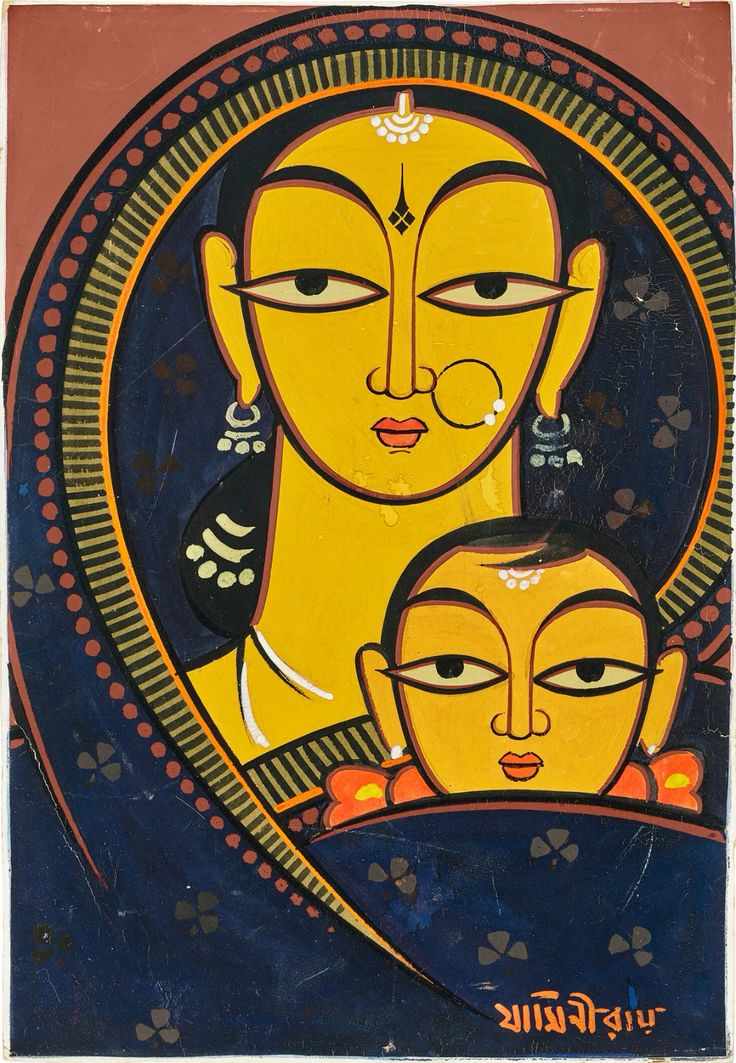
Pichwai art – A 400-year-old Indian traditional painting from Nathdwara, a city in Rajasthan. Also called Nathdwara Pichwai.
Which means
NATH – God Almighty
DWARA – Gateway
PICH - Back
WAI - Hanging.
As we got to know the meaning of Pichwai, let us learn more in detail about this wonderful artwork.
These paintings are traditionally painted on khadi cloth, which portrays Krishna and his Leela’s.
Pichwai art is traditionally used to decorate the backdrops of temples, specifically of Lord Srinathji. These paintings depict scenes from the life of Lord Krishna and his Leela (god’s actions are referred to as Leela’s) from birth till killing Kans.
In Pichwai, you would have widely seen Srinathji, Go Matha, Peacocks & Kamal Talay – this kind of art was brought to life to connect humans to God or They are considered a way for devotees to understand "the doings/life of Krishna"
Let’s understand the Art and its significance.
BIRTH OF PICHWAI ART:
Srinathj had 8 friends, called Ashtasakhas, named Surdas Ji, Paramanand Das Ji, Govindswami Ji, Kumbhan Das Ji, Chaturbhuj Das Ji, Cheetswami Ji, Krishna Ji & Nand Da Ji they used to sing Kirtans or Padas, Which were the devotional narrative songs. They were the verses that were usually heard/read.
To easily reach these verses among common people, with the approval of Guruji - Tilkayat Goswami all these verses were illustrated as Pichwais to adorn the back wall of the deity.
As there were different leelas associated with Krishna, accordingly the paintings were done in a manner such as Raas Leela Pichwai for Sharad Poornima, Nand Utsav Pichwai for Janmashtami, Go Matha Pichwai for Ashtami, and so on…Thus the birth of intricate designs and vibrant colours with spiritual themes as Pichwai Paintings.
In the 16th century, after the Nathdwara temple was constructed, The local artisans and patrons began beautifully decorating the temple with Pichwai paintings.
The paintings are mainly done on cloth and demand focused attention and practice, where diving into details and leading to the final product takes a couple of weeks or months.
WHAT'S IN A PICHWAI PAINTING?
The main aim of Pichwai is when the devotees come to see Krishna, the Pichwai painting hanging behind provides a sense of narrative & storytelling of his doings. The paintings are done according to the seasons of the year, festivals & leelas of the Lord Krishna. The essence of art is the hymns sung by the ashtasakhas narrating the scenes seen in the past like Peacock, Lotus, Cow, and Kadam Tree etc all as stated by the verses.
In Pichwai नीला कमल (Blue Lotus) and गुलाबी कमल (Pink Lotus) symbolizes Radha and Krishna. Neelkamal as Krishna and Gulabeekamal as Radha. Also, pink lotus is dear to Krishna and the blue lotus personifies the skin tone of Krishna.
Pichwai portrays another form of Krishna, that is him lifting the Govardhan Parvat with his left hand. A classic painting has 24 boxes known as Swaroops (8 prominent swaroops are detailed below). Within each of Krishna, Radha, her extensions, Gopis, Lotus, Cows, trees, and other elements associated with Srinathji are painted.

In our culture we see 8 different appearances of Srinathji, that is
Mangla
Shringara
Gwaal
Rajbhog
Utthapan
Bhog
Aarti
Shayan
We see this in all 8 swaroops in a day with a keen focus on the season, the time of day, and the mood of the deity. The lord here is worshipped as an 8-year-old kid.
Mangla – Lord adorned with just waistcloth and Paag (Turban)
Shringaar – Yashoda getting him ready adoration with clothes & Jewellery
Gwaal – Grazing his cows with herdmen and playing in the ground
Rajbhog – The Lord is offered various kinds of rich food and later goes to sleep
Utthapan – Lord has been woke up post-sleep
Bhog – Lord being offered fruits, sweets, and dry fruits
Aarti – Symbolizes after the lord has done with his day, his mother Yashoda takes his aarti to pamper him
Shayan – Lord prepared for the bed to sleep
So these are the themes followed by the artisans to paint Lord Srinathji.
HOW'S IT DONE?
Traditional Pichwai is painted on desi cotton fabric that is Khadi, which is handspun.
The artists would take a little loosely spun desi fabric and starch it with arrowroot powder. Later the dried starched fabric is made smooth with onyx stone to remove the wrinkles.
Artists would create the outline sketch on this, then the breath-taking illustrations are painted with colours that are naturally obtained from lake colours or stone colours such as indigo, coal, gold, silver, and other natural resources. ‘The bright and intense colours like yellow, bright pink, orange, green, black, and red overawe the Pichwai. The ornate part of the deity would be true gold colour followed by making borders decorated with crystals and stones.
As before it was khadi, now artisans use Silk, Linen, and Cambric.
Pichwai art is now gaining attention all over the world and the art is GI-tagged. Also not only restricted to temple hangings, It is now found in home decor such as wall hangings, bedspreads, cushion covers, wall carpets, and many more with the touch of contemporary without deviating or compromising on the traditional aspect of the art.









Write a comment ...